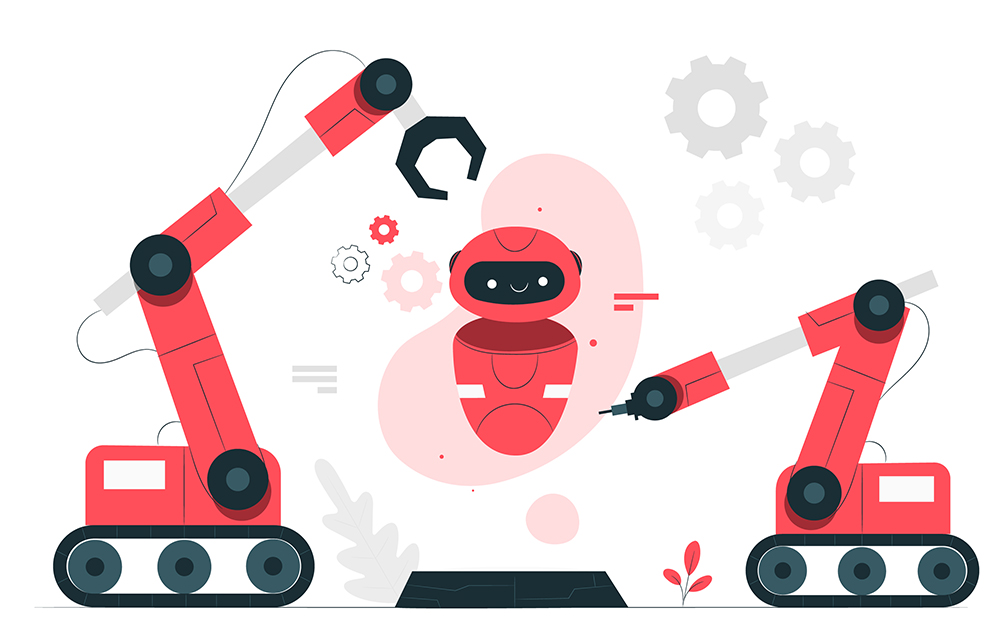It's important to acknowledge the vital role played by administrative professionals in the success of any busi...
Brickwork Blogs


In today's fast-paced and competitive business landscape, efficiency is not just a buzzword; it's a crucial factor that can make or break an organization's success. To stay ahead of the curve and achieve sustainable growth, businesses must continually strive to streamline their operations and make the most of their resources. This is where process improvement steps in as a key strategy to maximize efficiency.
Understanding Process Improvement
Process improvement refers to the systematic approach of identifying, analyzing, and enhancing existing workflows, procedures, and systems within an organization. The ultimate goal is to eliminate inefficiencies, reduce waste, and optimize resource utilization, thereby leading to improved quality, productivity, and customer satisfaction.
The Core Principles
At the heart of process improvement lie several core principles that guide organizations toward achieving efficiency:
1. Identifying Bottlenecks and Inefficiencies: The first step in any process improvement initiative is to identify bottlenecks and inefficiencies within the existing workflows. These could be redundant tasks, unnecessary steps, or delays in communication.
2. Data-Driven Analysis: Process improvement decisions should be driven by data and evidence rather than assumptions. Analyzing data about cycle times, error rates, and resource utilization provides valuable insights into areas that need attention.
3. Continuous Improvement: Process improvement is not a one-time effort. It's an ongoing journey that involves regular assessments and adjustments as the business landscape evolves.
4. Cross-Functional Collaboration: Efficient processes often involve multiple departments and teams. Collaborative efforts that span different functions can lead to holistic improvements that address interdepartmental challenges.
5. Employee Involvement: Employees who work with these processes daily often have valuable insights into their shortcomings. Their involvement in the improvement process can result in more practical and effective solutions.
Approaches to Process Improvement:
Several methodologies and frameworks have been developed to guide organizations in their process improvement efforts:
1. Lean: Lean methodology focuses on minimizing waste, including excess inventory, overproduction, and unnecessary processes. It aims to create value for customers while using fewer resources.
2. Six Sigma: Six Sigma is a data-driven approach that aims to reduce defects and variations in processes. It employs statistical analysis to identify and eliminate root causes of errors.
3. Total Quality Management (TQM): TQM is a holistic approach to process improvement that involves a cultural shift towards quality-oriented thinking and continuous improvement. It emphasizes customer satisfaction, employee involvement, and process standardization.
4. Kaizen: Kaizen is a Japanese term that translates to "continuous improvement." It encourages small, incremental changes in processes over time, often involving employees at all levels in the improvement process.
5. Business Process Reengineering (BPR): BPR involves a radical redesign of processes to achieve dramatic improvements in performance. It questions existing assumptions and seeks to create entirely new, more efficient processes.
1. Increased Efficiency: The primary goal of process improvement is to enhance efficiency, leading to quicker turnaround times, reduced costs, and optimized resource utilization.
2.Enhanced Quality: Streamlined processes are less prone to errors, resulting in higher quality products or services that meet or exceed customer expectations.
3. Cost Savings: By eliminating waste and unnecessary steps, organizations can reduce operational costs and allocate resources more effectively.
4. Better Employee Engagement: Employees are often more engaged when they are involved in the improvement of processes they work with daily. This can lead to increased job satisfaction and collaboration.
5. Customer Satisfaction: Efficient processes lead to faster response times and improved customer experiences, ultimately leading to higher levels of customer satisfaction and loyalty.
6. Adaptability: Well-optimized processes are more adaptable to changes in the market, technology, or business strategies.

Maximizing Efficiency through Process Improvement
There are many ways in which efficiency can be maximized with the help of process improvement. Here are some of them below:
1. Waste Reduction: One of the primary benefits of process improvement is waste reduction. This includes eliminating unnecessary steps, reducing rework, and minimizing resource wastage, ultimately saving time and costs.
2. Optimized Resource Allocation: Process improvement helps organizations identify where resources are being underutilized or misallocated. By optimizing resource allocation, businesses can achieve more with less.
3. Enhanced Quality: Streamlining processes often leads to improved quality control. When workflows are well-defined and standardized, the likelihood of errors and defects decreases, resulting in higher-quality products or services.
4. Faster Time-to-Market: In industries where speed is a competitive advantage, efficient processes can significantly reduce the time it takes to bring products or services to the market, giving the organization an edge.
5. Improved Customer Experience: Efficient processes often translate to quicker response times and better customer service. When customers experience smooth interactions and prompt solutions, their satisfaction levels rise.
6. Agility and Adaptability: An organization with streamlined processes is better equipped to adapt to changes in the market or unexpected disruptions. Agile processes can be adjusted more swiftly to accommodate new demands.
7. Cost Savings: Process improvement inherently leads to cost savings by eliminating waste and optimizing resource utilization. These savings can be reinvested into other growth initiatives.
Case in Point: Toyota Production System:
One of the most iconic examples of the impact of process improvement on efficiency is the Toyota Production System (TPS). This lean manufacturing approach revolutionized the automotive industry by minimizing waste, optimizing workflows, and focusing on continuous improvement. The TPS not only led to higher efficiency but also significantly improved product quality and reduced production costs.
Efficiency is the cornerstone of success in today's competitive business world. Process improvement offers a systematic and data-driven approach to achieving efficiency by identifying and eliminating bottlenecks, reducing waste, and optimizing resource utilization.
Organizations that embrace process improvement as a continuous journey are better positioned to adapt, grow, and thrive in dynamic markets. By maximizing efficiency through process improvement, businesses not only enhance their bottom line but also deliver better products, services, and experiences to their customers.
Process improvement is a continuous journey that empowers organizations to optimize their operations, achieve efficiency, and deliver value to their customers and stakeholders. By embracing data-driven analysis, involving employees, and adopting proven methodologies, businesses can transform their processes from sources of inefficiency to engines of innovation and growth.
In a rapidly evolving business landscape, process improvement remains an essential strategy for achieving and maintaining a competitive edge.
In conclusion, the pivotal role of process improvement in maximizing efficiency cannot be overstated. By continuously assessing and refining our operational workflows, we pave the way for heightened productivity, reduced waste, and streamlined operations. The journey towards efficiency is marked by a commitment to identifying bottlenecks, embracing innovative technologies, and fostering a culture of continuous improvement.
Through this multifaceted approach, organizations can adapt to evolving challenges, enhance customer satisfaction, and ultimately achieve their strategic goals. As we recognize process improvement as a dynamic and ongoing endeavor, we set ourselves on a trajectory toward sustained success in an ever-changing business landscape.
Brickwork implements various automation tools for process improvement which has led to a huge percentage of revenue of our clients. Let us know how you use process improvement in maximizing efficiency!


